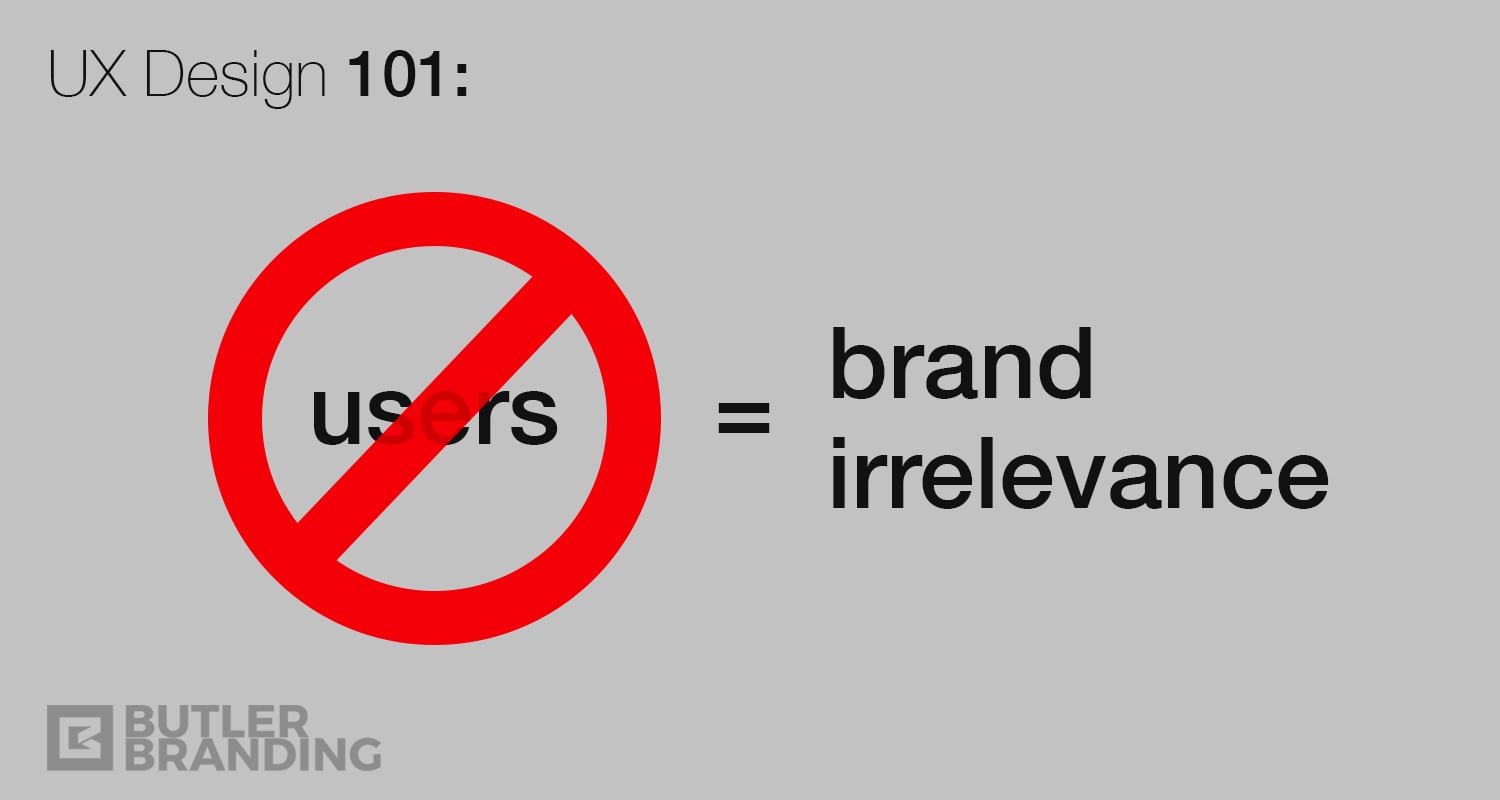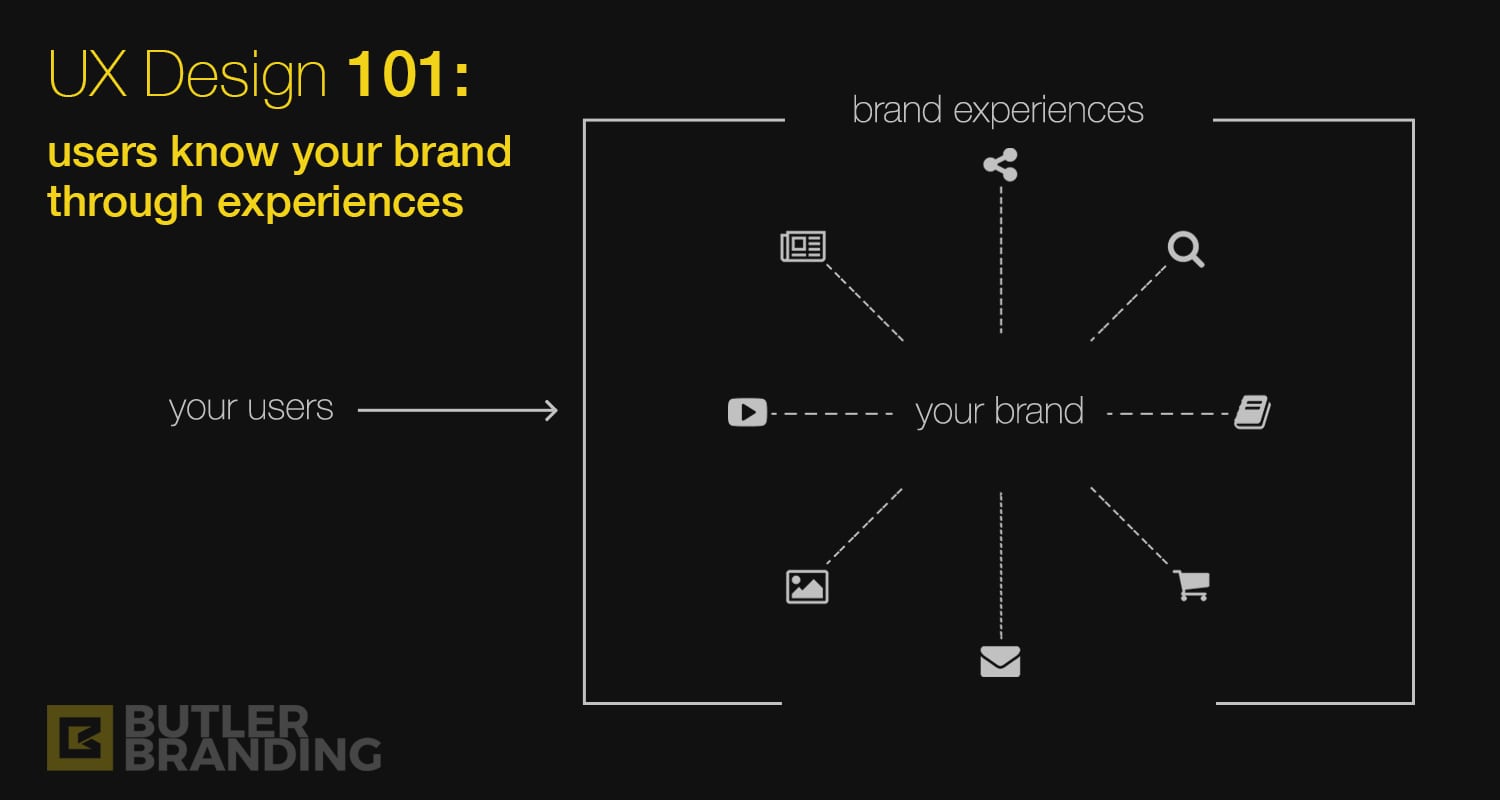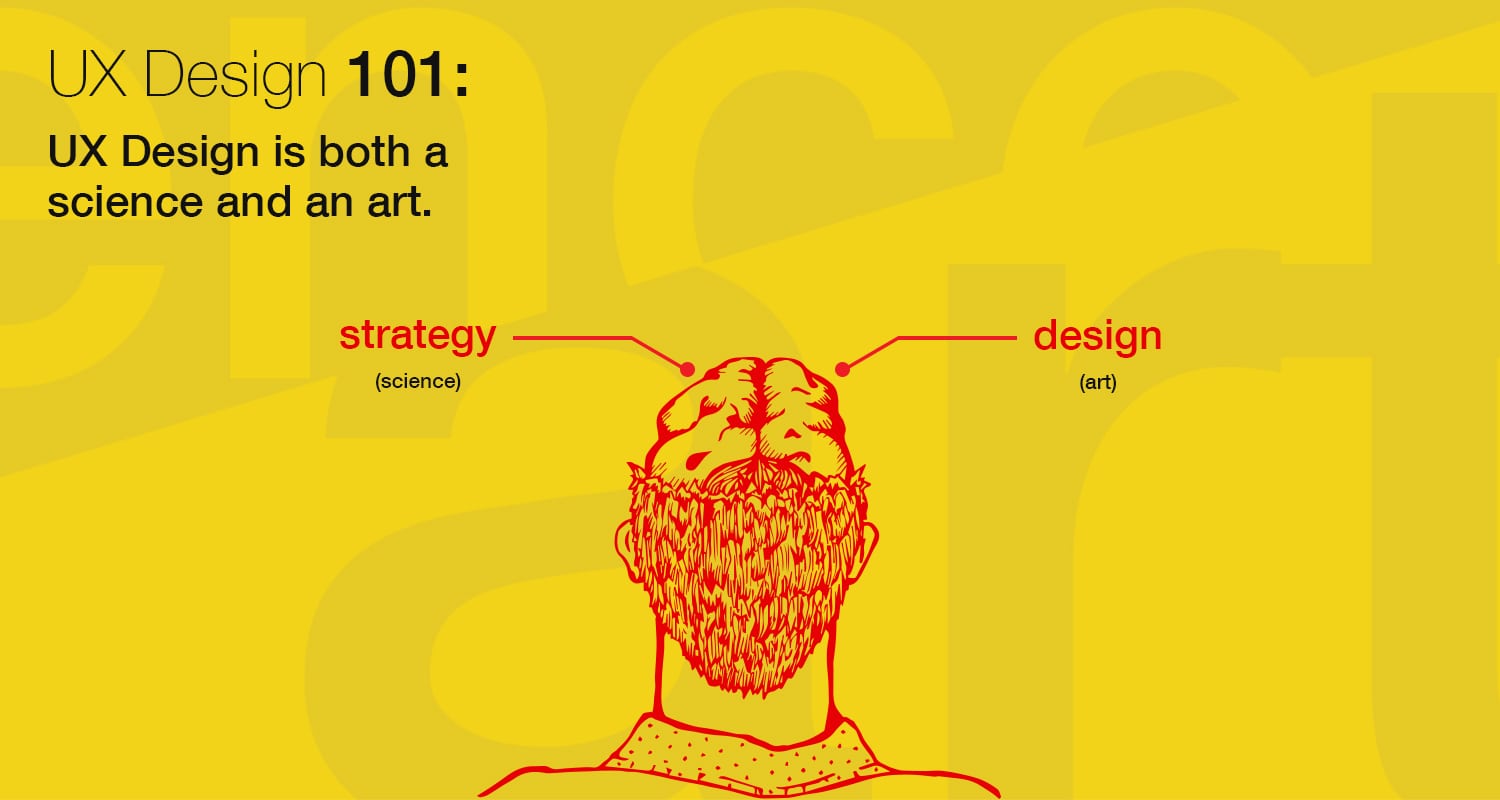UX Design stands for User Experience Design. A technical definition of UX Design is
“the process of enhancing user satisfaction by improving the usability, accessibility, and pleasure provided in the interaction between the user and the product.”
A good way to think about UX Design is to remove yourself from the picture completely. The problem many businesses have when seeking help from a designer is that they have a backwards philosophy on what success looks like. For example, a company may approach a designer and say something like “I need you to redesign our landing page because we’re not converting enough leads”, or “I need you to redesign our website for SEO because we are not ranking.” The focus is solely on the brand, and success is measured in conversions and search engine rankings – not the user’s satisfaction. The right questions to ask are “why are our users not seeing enough value on our landing page to reach out for more information? How can we add more value to them?” or “what information or features are we missing on our website that would make it hard for our users to find us?”
Stop thinking about your company, your brand and your bottom line for a moment, and ONLY think about your users (those you are trying to reach with your brand) – this is the essence of UX Design. Think about their preferences. What do they like? How can we help them? What are their pain-points? What would they expect from a company that offers to alleviate their pain? What would WOW them?
When working with a good UX Designer, their focus isn’t so much on your brand and how to make you more profitable – they’re going to be more concerned with the people you’re targeting. With that being said, one of the biggest obstacles many companies have to overcome is getting their focus and attention off of themselves and onto their users. The reason is because most times when a company is looking to work with a designer (whether it be a graphic designer, web designer, content marketer, etc.) it’s because the company is experiencing pain, or they’re thinking about some sort of company goal or expected outcome that’s directly tied to the company’s bottom line. For this reason some may struggle with the question, “if I’m looking to resolve a pain-point for my company, why do I need some UX Designer who is focused on resolving a pain-point for our users?” Those of you who are success-oriented already see that the question answers itself. If the user’s pain is alleviated, the company’s pain is alleviated as well.

Irrelevance Is The Death Of A Brand.
A brand is only as successful as it remains relevant to its users. The moment a brand’s users see the brand as irrelevant is the moment they stop being the brand’s users. Without users, there is no brand! If a user doesn’t see your brand as helpful to their bottom line, they will not use you anymore. Thus, solving your users’ problems will ultimately solve your brand’s problems. Remember the old adage – everyone is tuned into WIIFM (what’s in it for me).
So What Does A UX Designer Do?
UX Design, again, is the process of enhancing your users’ satisfaction. A UX Designer’s goal, therefore, is to design satisfying brand experiences that a user would have when interacting with your brand. UX Designers are typically focused on digital experiences such as websites and mobile apps. However, a brand experience can be any touch-point a user would have with your brand; consequently you could incorporate UX thinking into things like your corporate video, or your brochures and marketing materials, or sales approaches, or presentation materials, etc. When creating these brand touch-points, simply ask “what would really WOW our users here?”
How Do UX Designers Create Satisfying Brand Experiences?
To revisit the definition one more time, UX Design is the process of enhancing user satisfaction by improving three main areas:
Usability – How functional is your website, for example. How easy is it to navigate? How simple is it to interact with the content?
Accessibility – How easy is it for your users to access your brand or the content they’re interested in? The goal is to first align yourself with the right audience (targeting the right users) and then be easily found by them.
Pleasure – Aside from functionality and accessibility, how pleasurable is your users’ experience with your brand? Is your content praiseworthy? Is it share-worthy?
A UX Designer’s job, then, requires both strategy and creativity. UX Design is both a science and an art. Science – because a carefully crafted strategy must be taken into consideration before design. Art – because once the strategy is crafted it needs to be designed. For more details read the post on UX Design Strategy.
What Are Some Of The Benefits Of Incorporating UX Design?
Though UX Design is focused solely on your brand’s users rather than on your brand directly, there are natural benefits that will indirectly affect your brand’s bottom line, such as:
Brand Relevance – If you want to dominate your market with a loyal following, utilize UX design. Remember, your brand is only as successful as it remains relevant to its users. When you take the initiative to be relevant (helpful, meaningful, significant, applicable) to your users then they will naturally defer to your brand and establish brand loyalty.
SEO – If you want to increase search engine rankings, utilize UX design. The SEO Giants at MOZ write in Chapter 6 of their Beginners Guide to SEO, “Crafting a thoughtful, empathetic user experience helps ensure that visitors to your site perceive it positively, encouraging sharing, bookmarking, return visits, and inbound links—all signals that trickle down to the search engines and contribute to high rankings.”
Conversion – If you want to convert more leads on your landing pages, utilize UX design. Unbounce has a very helpful eBook on Attention Driven Design that discusses in detail the art and science behind highly effective landing page designs. The eBook defines Attention Driven Design as “… a disciplined adherence to visual design principles in order to reduce visual complexity and enhance the ease of comprehension.” In other words, focus on your user’s experience if you want to convert more leads.







